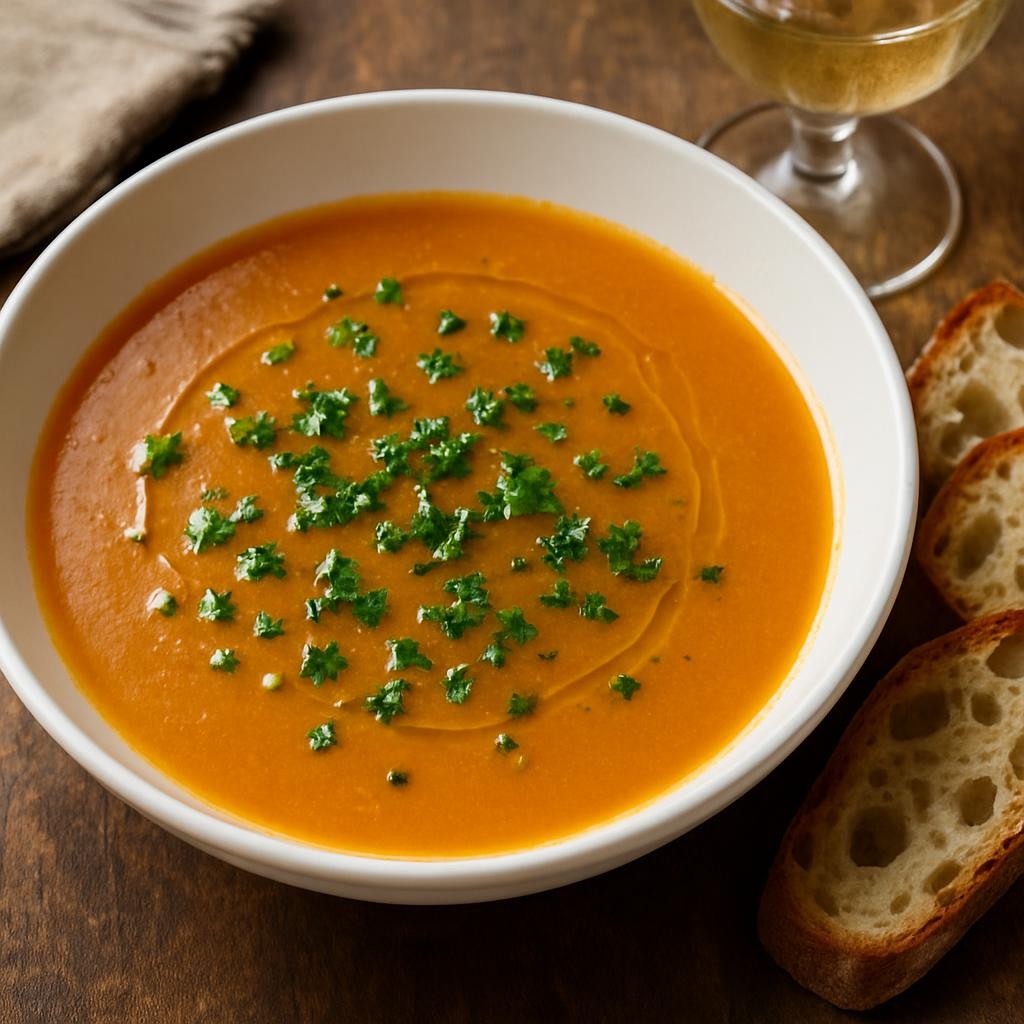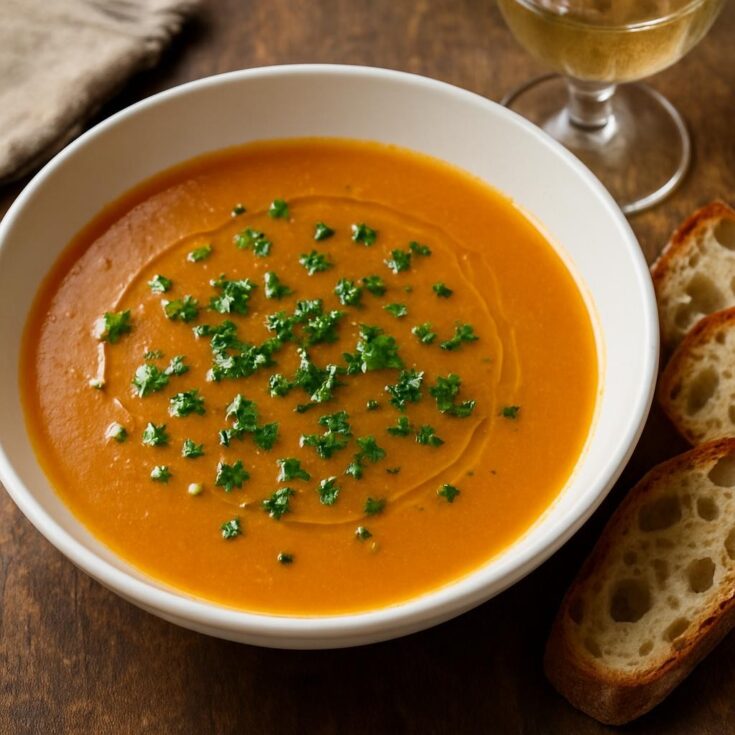Lobster Stock is a luxurious and flavorful base that elevates soups, stews, and sauces to gourmet levels. This rich, aromatic stock is made by simmering lobster shells with aromatic vegetables and herbs, extracting every ounce of umami flavor. Perfect for crafting lobster bisque or enhancing seafood dishes, making your own lobster stock at home is a rewarding culinary adventure that brings the taste of the ocean right to your kitchen.

Why You Will Love This Recipe
You will adore this lobster stock recipe for its depth of flavor and the ease with which it can be prepared. The process is straightforward, requiring minimal hands-on time while the stock simmers away, allowing you to multitask or relax at home. This recipe is perfect for seafood lovers and fits seamlessly into diets focused on fresh, whole ingredients. Whether you’re prepping for a special occasion or simply want to enhance your weeknight meals, this stock is a versatile kitchen staple.
Tips and Tricks
- Use Fresh Lobster Shells: For the best flavor, use shells from cooked lobsters. You can often find these at seafood markets or use leftover shells from a lobster meal.
- Roast the Shells: Before simmering, consider roasting the lobster shells in the oven for about 10-15 minutes at 400°F. This step enhances the flavor and adds a deeper color to your stock.
- Strain Thoroughly: After simmering, be sure to strain the stock through a fine mesh sieve or cheesecloth to achieve a clear liquid. This ensures no bits of shell or vegetable remnants remain.
- Make it Aromatic: Include herbs like thyme, bay leaves, and parsley to infuse your stock with additional flavor. You can also add a splash of white wine for acidity and depth.
Make Ahead Tips
This lobster stock can be made ahead of time and stored for future use. After preparing, let the stock cool completely before transferring it to airtight containers. It will stay fresh in the refrigerator for up to 3 days or in the freezer for up to 3 months. For easy use, consider freezing in ice cube trays, allowing you to defrost just the right amount when needed.

Recipe Variations
- Herb Variations: Experiment with different herbs like dill or tarragon for a unique twist.
- Add Spices: Incorporate spices such as black peppercorns, fennel seeds, or even a pinch of saffron for a luxurious touch.
- Vegetable Variations: Instead of the classic mirepoix (onions, carrots, celery), try adding leeks or fennel for a different flavor profile.
How to Serve
Once your lobster stock is ready, it can be used in various dishes. Serve it as a base for a creamy lobster bisque, or use it to cook risotto or pasta for a rich, seafood-infused flavor. Garnish with fresh herbs or a drizzle of olive oil for an elegant touch. For a more rustic presentation, serve in a deep bowl alongside crusty bread for dipping.

Pairing Suggestions
Pair your lobster stock with a chilled glass of Sauvignon Blanc or a light, citrusy cocktail like a gin and tonic. For side dishes, consider a fresh garden salad or buttery garlic bread. If you want to finish your meal on a sweet note, a light lemon sorbet would be the perfect complement.
How to Store
To store leftovers, transfer the cooled stock to airtight containers. In the refrigerator, it will last up to 3 days. For longer storage, freeze the stock in portions, which can be easily defrosted as needed. When reheating, do so gently on the stovetop to preserve flavor and avoid reducing the stock too much.
Equipment Needed
You will need a large stockpot for simmering the ingredients, a fine mesh strainer or cheesecloth for straining the stock, and a ladle for transferring the liquid. A baking sheet is also necessary if you choose to roast the lobster shells beforehand.

Dietary Adaptations
This recipe is not suitable for those following a vegan or vegetarian diet due to the use of lobster shells. However, you can create a similar umami-rich stock using vegetable scraps, seaweed, and mushrooms for a plant-based alternative. Just be mindful of the flavors and adjust the seasoning accordingly.
Seasonal Adaptations
In the summer, consider adding fresh herbs like basil or tarragon for a vibrant flavor. In the winter, use heartier root vegetables like parsnips or turnips to add warmth and depth to your stock. Seasonality can enhance the overall taste and freshness of the stock.
Recipe FAQs
- Can I use raw lobster shells? Yes, raw lobster shells can be used, but cooked shells will yield a richer flavor.
- How long does the stock need to simmer? Aim for 1-2 hours to achieve the best flavor without bitterness.
- Can I substitute lobster shells with other seafood shells? Yes, you can use shrimp or crab shells for a different flavor profile, but the resulting stock will differ slightly in taste.
How To Make lobster stock recipe
Lobster Stock

Lobster Stock is a luxurious and flavorful base that elevates soups, stews, and sauces to gourmet levels.
Ingredients
- 2 lbs lobster shells (from cooked lobsters)
- 1 onion, roughly chopped
- 1 carrot, roughly chopped
- 1 stalk celery, roughly chopped
- 2 cloves garlic, crushed
- 1 bay leaf
- 1 teaspoon dried thyme
- 6-8 cups water
- 1/2 cup dry white wine (optional)
- Salt and pepper to taste
Instructions
- Prepare the Shells: If using leftover shells, crack them open to help extract the flavors. For roasted shells, spread them on a baking sheet and roast in a preheated oven at 400°F for 10-15 minutes.
- Sauté Aromatics: In a large stockpot, add a splash of oil over medium heat. Add the chopped onion, carrot, celery, and garlic. Sauté for about 5 minutes until softened.
- Combine Ingredients: Add the lobster shells to the pot along with the bay leaf, thyme, and white wine (if using). Pour in 6-8 cups of water, just enough to cover the shells.
- Simmer: Bring the mixture to a boil, then reduce heat to low. Simmer uncovered for 1-2 hours, skimming any foam that forms on the surface.
- Strain the Stock: Once finished, remove from heat and strain the stock through a fine mesh sieve or cheesecloth into a large bowl. Discard the solids.
- Season: Taste the stock and season with salt and pepper as needed.
- Cool and Store: Let the stock cool completely before transferring it to airtight containers for storage.
Nutrition Information
Yield
8Serving Size
1Amount Per Serving Calories 205Total Fat 2gSaturated Fat 0gTrans Fat 0gUnsaturated Fat 1gCholesterol 102mgSodium 360mgCarbohydrates 10gFiber 1gSugar 1gProtein 31g
Easy Shrimp Recipes.com, occasionally offers nutritional information for recipes contained on this site. This information is provided as a courtesy and is an estimate only. This information comes from online calculators. Although allchickenrecipes.com attempts to provide accurate nutritional information, these figures are only estimates.
Final Thoughts
Making your own lobster stock is not just a culinary skill but an experience that brings the essence of the ocean into your home. With this recipe, you can create a base that adds sophistication and flavor to your dishes. Whether you’re a seasoned chef or a home cook, this lobster stock will be a cherished addition to your repertoire. Embrace the process, enjoy the aromas wafting through your kitchen, and savor the delicious results!

